Choosing Your Bird-Eating Tarantula
Bringing a bird-eating tarantula into your home is a significant decision, requiring careful consideration. These fascinating creatures can make rewarding pets, but their specific needs must be met to ensure their well-being. This guide will provide you with essential care tips to help your tarantula thrive. Before acquiring a bird-eating tarantula, research different species. Some are more docile and easier to handle than others. Consider your experience level, and the space and resources you can provide. Local regulations also influence the species you can own. Make sure you have a reliable source for purchasing your tarantula. Reptile expos, reputable online dealers, and breeders are generally preferable to pet stores, as they often have healthier specimens. Observe the tarantula’s activity, and overall appearance before purchasing. Look for a spider that appears alert, and has a full abdomen. Avoid tarantulas with missing limbs or those that appear lethargic.
What to Look for in a Healthy Tarantula
Selecting a healthy bird-eating tarantula is paramount for a successful pet-keeping experience. A healthy tarantula should exhibit several key characteristics. First, the tarantula should be active, moving around its enclosure and showing interest in its environment. Check for a full abdomen, indicating it has been eating regularly. Inspect the tarantula’s body for any signs of injury, such as missing limbs or damaged fangs. The tarantula’s fangs are essential for feeding. Look for a clean and well-maintained enclosure, free of debris or uneaten food. Also look for a spider that reacts to stimuli, but does not appear overly aggressive. Look for signs of parasites, such as mites. A healthy tarantula’s body should be free of any unusual bumps, lesions, or discoloration. Always quarantine a newly acquired tarantula to observe for signs of illness before introducing it to other pets. By paying attention to these details, you can increase your chances of bringing home a healthy and thriving bird-eating tarantula.
Size and Species Considerations
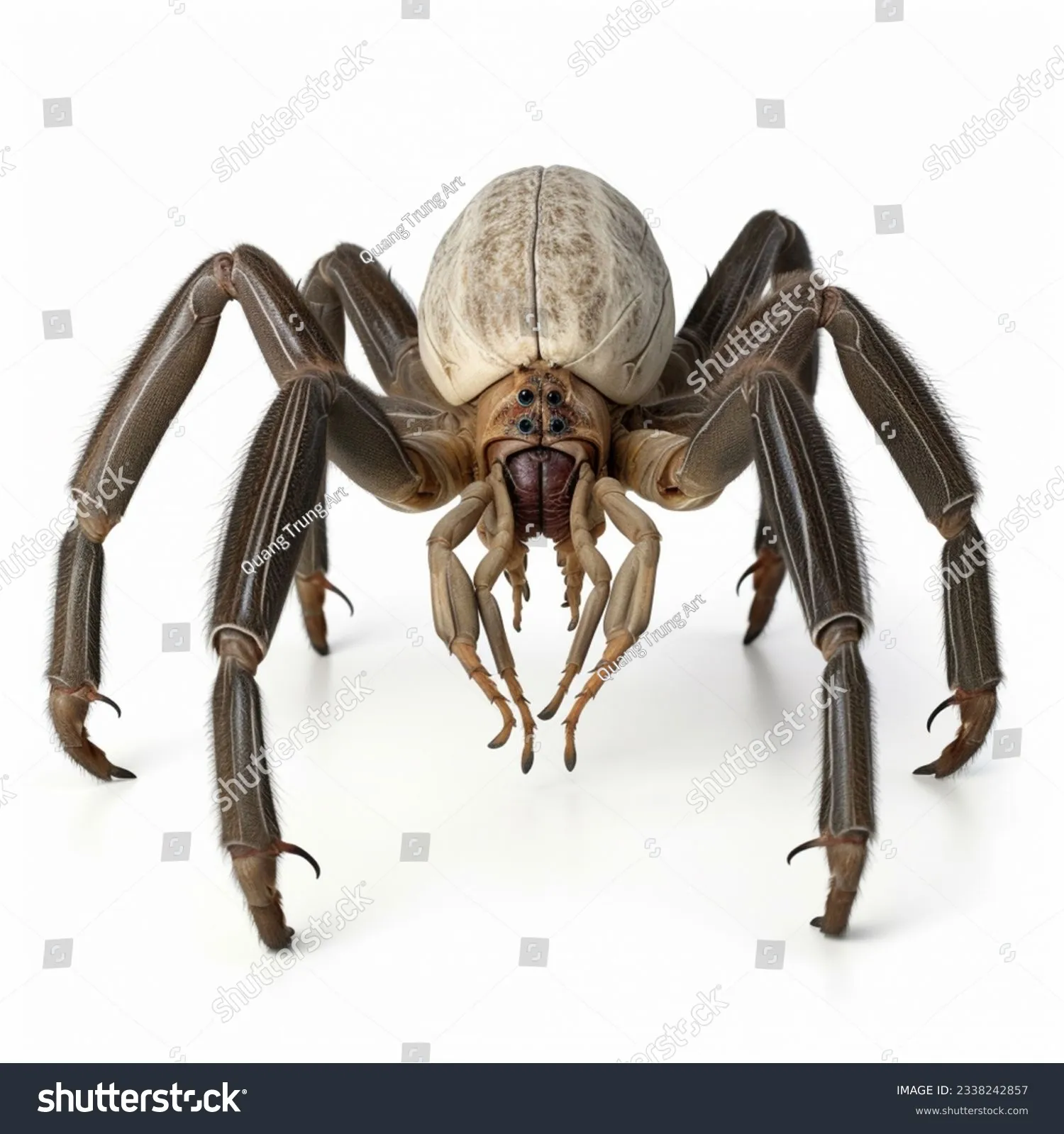
The size and species of your bird-eating tarantula significantly influence its care requirements. Different species vary in size, temperament, and specific needs. The Goliath Birdeater (Theraphosa blondi), one of the largest tarantula species, requires a larger enclosure and a more experienced keeper. Other species, like the Pinkfoot Goliath (Theraphosa apophysis), can be slightly easier to manage due to their potentially calmer temperaments and smaller size. Research the adult size of the species you are considering and ensure you can provide adequate space. Larger tarantulas need larger enclosures, while smaller species can thrive in more compact habitats. Some species are known for their defensive behaviors, like flicking urticating hairs, while others are more docile. Assess your experience level and select a species that matches your capabilities. Temperament considerations are also important. Some tarantulas are more prone to bite or display defensive postures. Therefore, understanding the species’ natural behaviors is critical for safe and successful tarantula keeping.
Setting Up the Perfect Bird-Eating Tarantula Enclosure
Creating the ideal habitat is crucial for your bird-eating tarantula’s well-being. The enclosure setup influences temperature, humidity, and the tarantula’s ability to exhibit natural behaviors. It is necessary to create an environment that mimics their natural habitat. The enclosure should be appropriately sized for the species and the tarantula’s size. A good rule of thumb is to provide an enclosure that is at least twice the tarantula’s leg span in width and length and a height that allows for burrowing and climbing, depending on the species’ habits. Use a secure enclosure made of glass or clear plastic, with a well-fitting lid to prevent escapes. Ensure the enclosure is well-ventilated, but also retains humidity. Ventilation is essential to prevent mold growth and allow fresh air circulation. Consider the tarantula’s natural behaviors. Terrestrial species benefit from more floor space and substrate for burrowing, while arboreal species need height and climbing structures. Provide hiding places like cork bark, artificial plants, or other decorations to allow the tarantula to feel secure and to retreat from view.
Enclosure Size and Type
Choosing the right enclosure size and type is a fundamental aspect of bird-eating tarantula care. The size of the enclosure must correspond to the size of the tarantula. A juvenile tarantula will be fine in a smaller enclosure, while an adult will require a larger one. As a general guideline, the enclosure should be at least twice the tarantula’s leg span in width and length. The height should be sufficient for the tarantula to move around and, if applicable, to burrow or climb. Consider the species’ natural behavior when selecting the enclosure type. Terrestrial species, which spend their time on the ground, will benefit from an enclosure with more floor space. Arboreal species that climb and spend time in trees need more height. A secure enclosure is essential. The lid should fit snugly, and there should be no gaps that the tarantula can escape. Consider using a screen top that allows good ventilation, and that prevents insects from entering the enclosure. The enclosure material should be non-toxic and easy to clean. Glass or clear plastic enclosures are the most common choices, as they allow you to see your tarantula and they are easy to sanitize.
Substrate and Decor
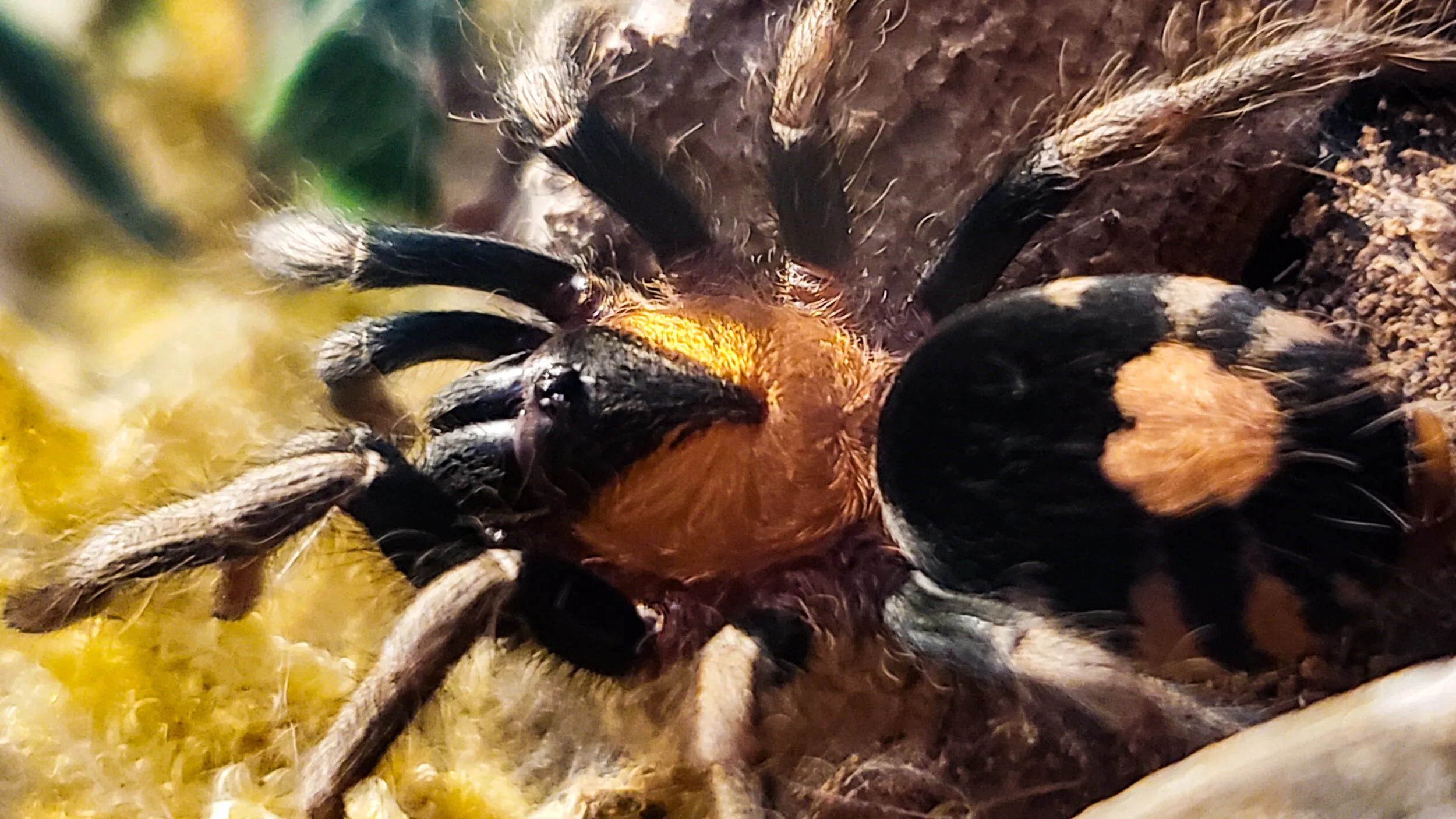
The substrate and decor provide essential elements for your bird-eating tarantula’s comfort and well-being. The substrate, or bedding, not only provides a surface for the tarantula to walk on, but also helps to regulate humidity and allows the tarantula to burrow. The choice of substrate should depend on the species and its natural habitat. For terrestrial species, a substrate mix of coconut fiber, peat moss, and vermiculite is often recommended. This combination retains humidity well while allowing for burrowing. Arboreal species will benefit from a substrate that allows for good drainage. The substrate should be deep enough for burrowing. Provide a depth of at least 4-6 inches for terrestrial species. Decor within the enclosure helps to make the tarantula feel secure. Include hiding places such as cork bark, artificial plants, or other decorations. These provide shelter where the tarantula can retreat and feel safe. Avoid decorations with sharp edges that could injure the tarantula. Ensure the decor is non-toxic and easy to clean. Changing the substrate regularly is essential for maintaining a healthy environment. Spot clean the enclosure weekly to remove uneaten food, fecal matter, and other debris. Replace the entire substrate every few months, or more often if needed.
Temperature and Humidity
Maintaining the right temperature and humidity levels is crucial for your bird-eating tarantula’s health and longevity. These creatures thrive in specific environmental conditions that replicate their natural habitat. The ideal temperature range for most bird-eating tarantulas is between 75-85°F (24-29°C). Use a reliable thermometer to monitor the temperature inside the enclosure. Avoid placing the enclosure in direct sunlight or near a heat source that could cause the temperature to fluctuate rapidly. Humidity levels are also essential, as they help with molting and overall well-being. The required humidity level varies depending on the species. Tropical species require a higher humidity level than desert species. Use a hygrometer to monitor the humidity levels. You can increase humidity by misting the enclosure with a spray bottle of dechlorinated water. The frequency of misting depends on the species and the humidity level. Ensure good ventilation to prevent mold growth. Provide a shallow water dish with fresh water at all times to help maintain humidity and hydration. Monitor and adjust the environmental parameters as needed. The goal is to create a stable and comfortable environment that mimics the tarantula’s natural habitat and promotes its health and longevity. Keeping an eye on the temperature and humidity ensures that the tarantula can molt properly.
Feeding Your Bird-Eating Tarantula
Feeding your bird-eating tarantula is a significant part of care. The type and frequency of feeding are essential to your tarantula’s health. Bird-eating tarantulas, as the name suggests, are opportunistic predators and their diet consists mainly of insects, but also can include small vertebrates. Crickets, cockroaches, mealworms, and superworms are standard choices for feeding. Ensure the insects are gut-loaded before feeding them to your tarantula. This means feeding the insects a nutritious diet. This enriches the nutritional value of the insects and provides a more balanced meal for your tarantula. The feeding frequency depends on the tarantula’s age, species, and size. Juvenile tarantulas need to be fed more frequently than adults. As a general guideline, juveniles should be fed 2-3 times a week, and adults once a week. Remove any uneaten food after 24 hours. This prevents the build-up of debris and prevents the risk of mites or other unwanted pests. Watch for changes in feeding behavior. A tarantula that stops eating could be preparing to molt or may be experiencing stress. Always offer fresh water to your tarantula. While they get some moisture from their food, a water source is necessary for hydration.
What to Feed Your Tarantula

The diet of a bird-eating tarantula consists of a variety of insects, supplemented occasionally with small vertebrates. Choosing the right food items ensures that your tarantula receives all the necessary nutrients. Crickets are a popular and readily available food source. They offer a good source of protein and are easy to manage. Cockroaches are another excellent choice, as they are also nutritious and have a good meat-to-shell ratio. Mealworms and superworms are also suitable, though they are higher in fat, so they should be fed in moderation. Before feeding, gut-load the insects with a nutritious diet of fruits, vegetables, and commercial insect food. This process enhances the nutritional value of the insects. Pinky mice are a supplemental food source, particularly for larger tarantula species. However, pinky mice should be offered infrequently, as they are high in fat. Offer a variety of food items to ensure that your tarantula receives a balanced diet. The size of the food items should correspond to the size of the tarantula. Offer food that is roughly the same size as the tarantula’s abdomen. Avoid feeding wild-caught insects. These insects may carry parasites or pesticides. Always use a clean pair of tongs to offer food. This prevents the tarantula from accidentally biting you.
Feeding Frequency
Establishing the correct feeding frequency is essential to your bird-eating tarantula’s health. The feeding schedule should be adapted to the tarantula’s age, species, and size. Juvenile tarantulas, which are actively growing, require more frequent feeding than adults. As a general guideline, juvenile tarantulas should be fed 2-3 times a week. Adult tarantulas can usually be fed once a week, or even less frequently. The feeding frequency also depends on the species. Some species have higher metabolisms and will need to be fed more often. The feeding frequency may need to be adjusted based on the tarantula’s appetite. If your tarantula consistently refuses food, it could be preparing to molt or may be experiencing stress. Remove any uneaten food within 24 hours to prevent the build-up of debris and reduce the risk of mites. Observe the tarantula’s abdomen. A well-fed tarantula will have a plump abdomen, whereas a skinny abdomen might indicate that the tarantula isn’t eating enough. Provide fresh water in a shallow dish at all times, regardless of feeding frequency.
Watering and Hydration
Providing adequate hydration is crucial for the health and well-being of your bird-eating tarantula. Proper hydration is essential for molting, digestion, and overall health. The two main ways to provide water are through a water dish and by misting. A shallow water dish is essential. This should be filled with fresh, clean water at all times. Use a dish that is shallow enough to prevent the tarantula from drowning, but large enough for the tarantula to access easily. Misting the enclosure is also important. Mist the enclosure with a spray bottle of dechlorinated water. The frequency of misting should depend on the species and the humidity requirements. Monitor the humidity levels using a hygrometer and adjust the misting frequency as needed. Do not over mist the enclosure. Excessive moisture can lead to mold growth. Observe the tarantula’s behavior. A dehydrated tarantula may appear lethargic or have a shriveled abdomen. Always use dechlorinated or bottled water, as tap water may contain harmful chemicals. Regular water changes are important for maintaining water quality. Change the water in the dish every few days to keep it clean.
Providing Fresh Water
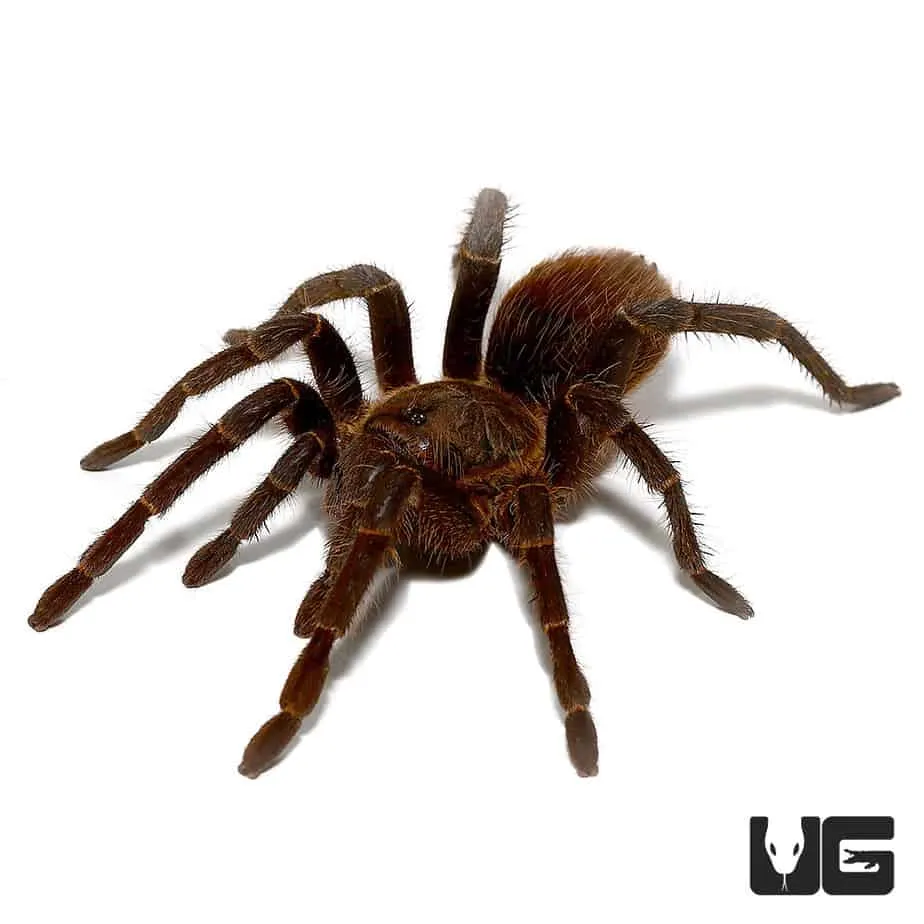
Providing fresh water is a non-negotiable part of bird-eating tarantula care. Clean, readily available water is essential for hydration, molting, and overall health. A shallow water dish should be placed in the enclosure at all times. Choose a dish that is wide and stable, to prevent accidental spills. The water dish should be shallow enough to prevent the tarantula from drowning, particularly with young tarantulas. It is important to clean and refresh the water dish regularly. Remove any debris. The water should be changed every 1-2 days to prevent the build-up of bacteria. You can use dechlorinated tap water or bottled water. Never use tap water that has not been treated to remove chlorine and chloramine, as these chemicals can be harmful to your tarantula. Monitor the water level and refill the dish as needed. Keep a close eye on your tarantula’s behavior. If your tarantula appears dehydrated, you may need to increase the frequency of water changes or misting. Always ensure that your tarantula has easy access to fresh, clean water to promote its health and well-being.
Maintaining Humidity Levels
Maintaining the appropriate humidity levels is crucial for your bird-eating tarantula’s health. Humidity plays a vital role in helping the tarantula molt successfully. The required humidity level varies depending on the species. Some species, such as those from tropical regions, need higher humidity, while others, such as those from arid environments, require lower humidity. Use a hygrometer to monitor humidity levels. Position the hygrometer inside the enclosure. You can increase humidity by misting the enclosure with a spray bottle of dechlorinated water. The frequency of misting depends on the species’ needs. For species that require higher humidity, you may need to mist the enclosure daily. For drier species, you may only need to mist a few times a week. Provide good ventilation, as excessive humidity without adequate air circulation can lead to mold growth and other health issues. Ensure that the substrate is slightly moist, but not waterlogged. Adjust the humidity levels based on the tarantula’s behavior. If your tarantula is struggling to molt, the humidity may be too low. If you see mold, the humidity is likely too high. Monitor the humidity regularly and make adjustments as needed to create an environment that supports the tarantula’s well-being.
Handling and Safety
Handling a bird-eating tarantula should be approached with caution and respect for its natural behaviors. While some tarantulas are more docile than others, all tarantulas can bite if they feel threatened. The risk of bites is not the only concern when handling these arachnids. They can also flick urticating hairs from their abdomen. These hairs cause irritation. Always observe the tarantula’s behavior before attempting to handle it. A tarantula that is agitated, defensive, or showing a threat posture should not be handled. Handle the tarantula close to the ground. This reduces the risk of injury if it falls. Keep your hands clean and free of any lotions or perfumes. These can irritate the tarantula. Handling should be kept to a minimum to reduce stress on the tarantula. It is often best to observe your tarantula and interact with it by providing care and enrichment, rather than handling it directly. Always prioritize your safety and the safety of your tarantula.
Safe Handling Practices
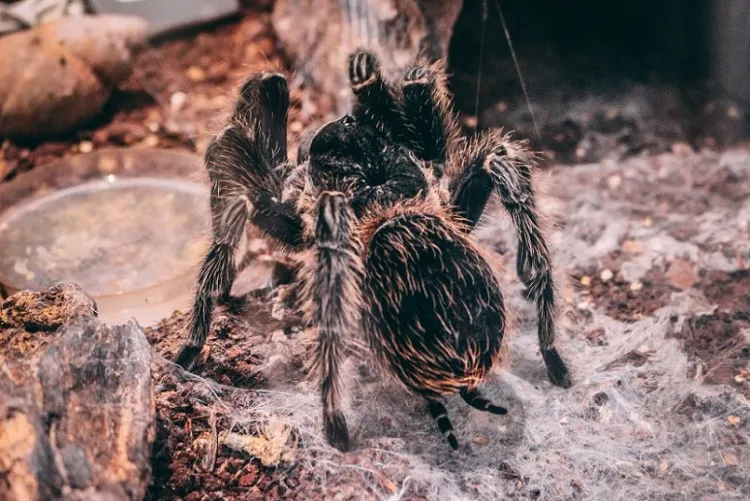
Safe handling practices are important when interacting with your bird-eating tarantula. The first and most important rule is to know your tarantula’s temperament. Observe its behavior closely before attempting to handle it. If the tarantula appears stressed, agitated, or defensive, it is best to leave it alone. Handle the tarantula in a safe environment, such as close to the ground or over a soft surface, to reduce the risk of injury if it falls. Use a gentle approach. Never make sudden movements that could startle the tarantula. When handling, use both hands to support the tarantula’s body, avoiding squeezing or putting pressure on it. Be mindful of the tarantula’s fangs. Always wash your hands thoroughly before and after handling your tarantula. This helps to prevent the spread of bacteria or other potential hazards. Keep handling sessions short. Prolonged handling can cause stress to the tarantula. Always prioritize the safety of both yourself and your tarantula. If you are unsure about handling, it is always best to avoid it, and to enjoy observing your pet in its enclosure.
Recognizing Signs of Stress
Recognizing signs of stress in your bird-eating tarantula is crucial for their well-being. Stress can lead to a variety of health problems. Understanding the signs of stress enables you to take prompt action and reduce the negative effects of stress on the tarantula. One of the most common signs is a change in the tarantula’s behavior. If a tarantula that is usually active becomes reclusive, and hides in its burrow, it could be a sign of stress. Another sign is loss of appetite. A stressed tarantula may stop eating. Look for any changes in the tarantula’s posture. Defensive or aggressive postures can also indicate stress. Other signs of stress include excessive burrowing, or pacing within the enclosure. Environmental factors, such as incorrect temperature or humidity, can also cause stress. Always address any potential stressors promptly. Make necessary adjustments to the tarantula’s environment or provide appropriate care. If you observe persistent signs of stress, consult with a veterinarian or experienced tarantula keeper. Understanding these signs enables you to provide a safe and healthy environment for your bird-eating tarantula.
Health and Common Problems
Bird-eating tarantulas, like all pets, can be susceptible to certain health problems. Being aware of these issues and knowing how to identify and address them is essential for responsible pet ownership. Regularly inspecting your tarantula for signs of illness or injury is a crucial part of preventive care. This includes inspecting the tarantula’s body, checking the enclosure, and monitoring the tarantula’s behavior and eating habits. The most common health problem is parasitic mites. These tiny arachnids can infest the tarantula and its enclosure, causing discomfort and potentially transmitting diseases. Other potential problems include injuries, infections, and molting issues. Maintaining a clean enclosure and providing proper care are crucial in preventing health problems. Ensure that the enclosure is properly ventilated, and that the humidity and temperature levels are appropriate for the species. Regular observation and preventive care play a critical role in maintaining a healthy and happy bird-eating tarantula. Consult with a veterinarian or experienced tarantula keeper if you notice any signs of illness or if you have any concerns about your tarantula’s health.
Identifying and Treating Mites
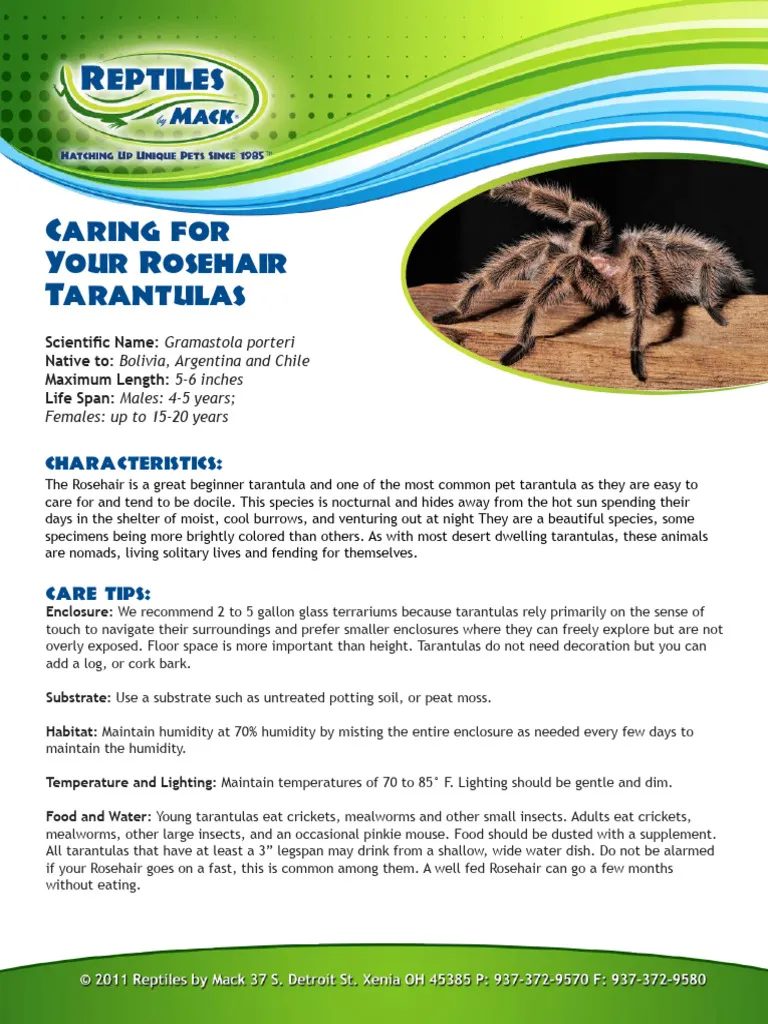
Mites are a common problem in bird-eating tarantula care. These tiny parasites can infest the tarantula and its enclosure, causing discomfort and potentially transmitting diseases. Identifying mites early is key to successful treatment. Mites typically appear as small, moving specks on the tarantula’s body, or on the substrate and enclosure walls. They are often white, red, or brown in color. Infestations can cause the tarantula to become restless. The tarantula may also appear to be scratching or rubbing against the enclosure. If you suspect a mite infestation, isolate the affected tarantula in a separate enclosure to prevent the spread of mites to other tarantulas. Treatment often involves a combination of methods. Remove and replace the substrate. Thoroughly clean and disinfect the enclosure. Some keepers use mite control products that are safe for use with tarantulas. Consult with a veterinarian or experienced tarantula keeper to determine the appropriate treatment. Preventing mite infestations is crucial. Maintain a clean and well-ventilated enclosure. Regularly inspect the tarantula and the enclosure for signs of mites. When introducing new items to the enclosure, such as decorations or substrate, quarantine them first to ensure they are free of mites. By taking proactive steps to prevent and treat mite infestations, you can protect your bird-eating tarantula’s health and well-being.
Dealing with Molting
Molting is a natural and essential process for bird-eating tarantulas. As the tarantula grows, it sheds its exoskeleton. This process is called molting, and it allows the tarantula to grow and regenerate lost limbs. The molting process can be stressful for the tarantula, and the keeper must be prepared to assist the tarantula. The frequency of molting depends on the tarantula’s age, species, and growth rate. Juveniles molt more frequently than adults. Before molting, the tarantula may stop eating, and become less active. The tarantula may also appear sluggish and may create a web mat. During the molting process, the tarantula will lie on its back, and shed its old exoskeleton. The new exoskeleton is soft and vulnerable. It is important to maintain a stable and humid environment during molting. Avoid disturbing the tarantula during the molting process. Do not attempt to handle the tarantula, and do not feed it until its fangs have hardened. The entire process can take several hours or even days. After molting, the tarantula will have a brighter appearance and may appear to be larger. Provide the tarantula with time to recover after molting. The tarantula will typically resume normal activity and feeding after the new exoskeleton has hardened. By understanding and supporting the molting process, you can help your bird-eating tarantula to thrive.
